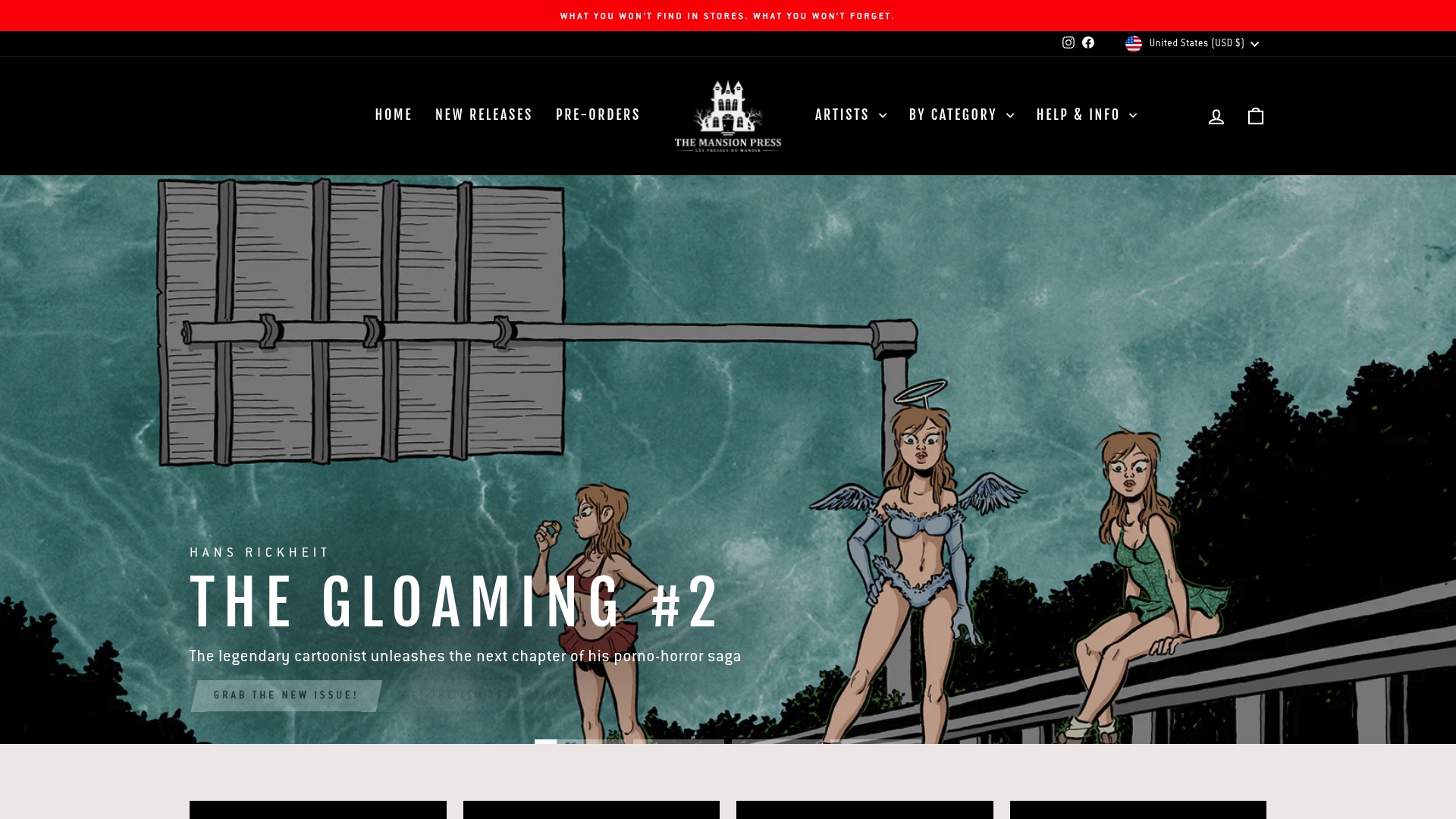7 Ways the Most Provocative Comics Inspire Collectors
Did you know that over $1.2 billion worth of comics are sold each year worldwide? This vibrant market thrives not only on superheroes but on works that challenge and provoke. Comics that spark debate often become the most collectible, shaping cultural conversations about power, gender, and society. Understanding what makes these comics controversial and valuable helps collectors and fans appreciate their impact far beyond the page.
Table of Contents
- 1. Understanding What Makes Comics Provocative
- 2. Recognizing Iconic Artists Behind Controversial Works
- 3. Exploring The Power Of Social And Political Themes
- 4. Collecting Limited And Banned Editions
- 5. Spotting Emerging Talent In Provocative Comics
- 6. Evaluating The Impact On Art And Comic Markets
- 7. Building Your Own Thought-Provoking Collection
Quick Summary
| Takeaway | Explanation |
|---|---|
| 1. Comics challenge societal norms | Provocative comics confront established perspectives and spark meaningful dialogue through visual storytelling. |
| 2. Collectors seek cultural artifacts | Limited and banned editions are valued for their artistic rebellion and cultural significance, making them rare collector items. |
| 3. Emerging artists redefine narratives | New voices in comics challenge traditional storytelling and explore complex social themes, engaging readers through innovative art. |
| 4. Political and social themes drive impact | Comics like Underground and World War 3 Illustrated serve as platforms for activism and critique, influencing public discourse. |
| 5. Build a diverse and significant collection | Thoughtful collecting focuses on artistic innovation, historical contexts, and diverse perspectives, preserving cultural dialogues through comics. |
1. Understanding What Makes Comics Provocative
Comic books have long been a medium for pushing boundaries and challenging societal norms through powerful visual storytelling. Provocative comics go beyond mere entertainment by confronting readers with complex narratives that challenge established perspectives and spark meaningful dialogue.
At the core of provocative comics is the ability to subvert traditional representations and expose uncomfortable truths about human nature. Artists and writers use visual language to challenge existing power structures and representation norms. For instance, the Understanding Violent Comics and Controversy in Art reveals how comic artists intentionally disrupt expected narratives.
One significant aspect of provocative comics is their critique of gender representation. Research highlights fascinating examples like the Good Girl Art (GGA) movement which originated in mid 20th century comics. According to comic historians, GGA represented a hyper sexualized version of femininity that simultaneously objectified and empowered female characters. The Hawkeye Initiative further demonstrates this critical lens by humorously reimagining superhero poses to expose inherent gender biases in comic book imagery.
Provocative comics achieve their impact through several key strategies:
- Challenging societal taboos
- Reinterpreting historical narratives
- Exposing systemic inequalities
- Presenting complex moral dilemmas
- Using satire and dark humor
Collectors are drawn to these works not just for their artistic merit but for their potential to provoke thought and challenge established perspectives. By collecting provocative comics, enthusiasts participate in a larger cultural conversation about representation, power, and social change.
2. Recognizing Iconic Artists Behind Controversial Works
Some artists transcend traditional storytelling by creating comic works that challenge societal norms and provoke deep intellectual discourse. These visionary creators do not simply illustrate stories but craft powerful visual narratives that push cultural boundaries.
Political cartoonists and radical comic artists have long been instrumental in challenging established perspectives. Take Seth Tobocman for instance. Since 1979, he has used his comic book anthology World War 3 Illustrated as a platform for social commentary, addressing critical movements like anti globalization and anti war causes. His work demonstrates how comics can be profound tools for political expression.
Another remarkable example is Frank Cho, a Korean cartoonist known for provocative representations of female characters. Cho blends physical power with sensual artistic expression, creating Amazonian women that challenge traditional comic book depictions. His art deliberately confronts viewers expectations and sparks conversations about representation.
Collectors are drawn to these artists for several compelling reasons:
- Challenging social norms
- Presenting alternative narratives
- Pushing artistic boundaries
- Documenting cultural movements
- Creating visually striking artwork
For those interested in exploring more about groundbreaking comic artists, 7 Notable Cult Comic Authors Every Fan Should Know provides additional insights into creators who have transformed the medium. Understanding these artists means recognizing comics as a legitimate form of cultural commentary and artistic expression.
3. Exploring the Power of Social and Political Themes
Comic books have emerged as a powerful medium for social commentary and political critique. Far beyond simple entertainment, these graphic narratives provide artists with a unique platform to challenge societal norms and expose critical issues.
Underground comics have been particularly instrumental in driving social discourse. A remarkable example is the groundbreaking publication Slow Death, first published in 1970 by Last Gasp. This revolutionary comic anthology used dark humor and provocative imagery to critique environmental destruction and corporate greed. Artists like S. Clay Wilson and Greg Irons deployed grotesque visual storytelling to make powerful political statements that conventional media could not.
Similar to Slow Death, other comic artists have used their work as a form of activism. Seth Tobocman represents another excellent example. Since 1979, his anthology World War 3 Illustrated has served as a platform for addressing critical social movements including anti globalization and anti war causes. These comics transform visual art into a form of societal protest.
Collectors are drawn to politically charged comics for several compelling reasons:
-
Documenting historical social movements
-
Challenging existing power structures
-
Preserving alternative narratives
-
Capturing moments of cultural transformation
-
Exploring complex social issues through art
Understanding Underground Comic Creators: Art and Impact provides deeper insights into how these artists transform personal passion into powerful social commentary. By collecting these works, you become part of a broader conversation about art as a mechanism for social change.
4. Collecting Limited and Banned Editions
Limited and banned comic editions represent the holy grail for serious collectors who seek more than just entertainment. These rare publications are powerful artifacts that capture moments of cultural tension and artistic rebellion.
Controversial comics often become highly prized collector items precisely because of their restricted circulation. Take Johnny Ryan’s Angry Youth Comix as a prime example. Originally self published and later distributed by Fantagraphics, this adult humor comic featuring characters like Loady McGee became legendary for its shocking and politically incorrect content. Such publications challenge social norms and become valuable precisely because of their provocative nature.
Historically, limited edition comics have emerged from unexpected places. The Shanghai Manhua, a weekly pictorial magazine published between 1928 and 1930, represents an extraordinary example of provocative comic art. Considered the first successful manhua magazine in China, it was renowned for its bold cover art and the popular Mr. Wang comic strip by Ye Qianyu.
Collectors are attracted to these editions for several compelling reasons:
- Capturing cultural moments of rebellion
- Preserving artistic expressions that challenge norms
- Investing in potentially appreciating artwork
- Documenting social movements
- Owning pieces of forbidden creative expression
Understanding Collecting Rare Comics Guide for Enthusiasts provides deeper insights into the nuanced world of rare comic collection. By pursuing these limited editions, you are not just collecting art you are preserving critical moments of cultural dialogue.
5. Spotting Emerging Talent in Provocative Comics
Discovering fresh artistic voices in the comic world requires a keen eye for innovation and cultural commentary. Emerging provocative comic artists challenge traditional narratives through their unique visual storytelling and bold perspectives.
Take Domien Delforge as an outstanding example. Known as Studio Stoutpoep, this Belgian artist creates single panel illustrations that spark intense dialogue about complex social issues. His work explores challenging topics like toxic masculinity and gender biases with a provocative humor that simultaneously entertains and challenges viewers.
Another remarkable talent is Anouk Ricard, a graduate from the Strasbourg School of Decorative Arts. Her work brilliantly demonstrates the art of creating narratives that defy conventional genres. Ricard masterfully balances child friendly aesthetics with satirical and sometimes risqué content that appeals to diverse audiences.
Collectors seeking emerging provocative talent should look for artists who:
- Challenge societal norms
- Demonstrate unique visual storytelling
- Explore complex social themes
- Use humor as a critical tool
- Push artistic boundaries
7 Essential Tips for Emerging Artists in Alternative Comics provides additional insights into identifying and supporting innovative comic creators. By recognizing these emerging talents early, collectors not only acquire compelling artwork but also support critical cultural conversations.
6. Evaluating the Impact on Art and Comic Markets
Provocative comics are not merely artistic expressions but powerful economic and cultural assets that reshape entire artistic landscapes. These boundary pushing works create ripple effects that transform collector markets and artistic perspectives.
Artistic innovation has always driven comic market dynamics. Consider Jim Steranko’s groundbreaking work in Strange Tales & Nick Fury, Agent of S.H.I.E.L.D., which revolutionized comic book visual storytelling during the 1960s. Steranko’s psychedelic sensibilities expanded what artists could achieve on a comic page, demonstrating how provocative art creates new market value.
Historically, specific artistic movements have dramatically influenced collector markets. The good girl art movement of the 1940s and 1950s exemplifies this phenomenon. Popularized among young men particularly US servicemen these artworks by pioneers like Bill Ward and Matt Baker transformed comic aesthetics and collector interests.
Collectors recognize provocative comics as significant market indicators through:
- Tracking artistic innovation
- Identifying cultural zeitgeist
- Evaluating emerging talent
- Understanding societal shifts
- Predicting market trends
Master Investing in Graphic Novels for Future Gains offers additional strategies for understanding how provocative comics represent more than artistic statements they are investments in cultural dialogue.
7. Building Your Own Thought-Provoking Collection
Creating a provocative comic collection is an art form that requires vision, research, and a deep understanding of cultural narratives. Your collection becomes a personal archive of artistic rebellion and social commentary.
Strategic collecting means looking beyond mainstream publications and seeking out works that challenge established narratives. Consider Johnny Ryan’s Angry Youth Comix as an exemplary model. Originally self published and later distributed by Fantagraphics this comic represents the kind of provocative work that transcends traditional storytelling.
Historical publications like Shanghai Manhua demonstrate how comics can capture critical cultural moments. Published between 1928 and 1930, this Chinese pictorial magazine with its provocative cover art and Mr. Wang comic strip represents the type of groundbreaking work collectors should seek.
When building your thought-provoking collection, focus on:
- Diversity of perspectives
- Historical significance
- Artistic innovation
- Cultural critique
- Potential for future value
7 Essential Favorite Cult Comic Anthologies for Collectors offers additional guidance for curating a collection that tells a powerful story. Remember that a truly exceptional collection is not just about acquiring items it is about preserving cultural dialogues through visual art.
This table summarizes the core themes and insights from the article, focusing on the provocative nature of comics, iconic artists, social themes, and the impact on the art market.
| Topic | Description | Key Considerations |
|---|---|---|
| Provocative Comics | Comics challenge societal norms, using visual storytelling to tackle complex narratives and subvert expectations. | Techniques include critiquing gender representation and exposing systemic inequalities. |
| Iconic Artists | Visionary creators like Seth Tobocman and Frank Cho use comics for social commentary and representation. | Artists are recognized for pushing boundaries and documenting cultural movements. |
| Social & Political Themes | Comics serve as platforms for political critique and social discourse, often within underground scenes. | Works like “Slow Death” address environmental and corporate critique using dark humor. |
| Collection Value | Limited and banned editions are prized for capturing cultural rebellion and challenging norms. | Examples include “Angry Youth Comix” and historical works like “Shanghai Manhua.” |
| Emerging Artists | New talents challenge traditional narratives with unique styles and bold content. | Artists like Domien Delforge and Anouk Ricard explore social issues and use humor innovatively. |
| Market Impact | Provocative comics influence economic and cultural landscapes redefining market trends. | Artistic innovations by figures like Jim Steranko have historically shaped collector markets. |
| Building a Collection | Developing a thought-provoking collection requires focus on narrative diversity and historical significance. | Seek out works with artistic innovation and potential for cultural dialogue preservation. |
Discover and Own Provocative Comics That Inspire Change
Are you passionate about collecting comics that do more than entertain? The article highlights how provocative comics challenge social norms, confront gender biases, and capture cultural rebellions. If your goal is to build a collection that sparks conversation and preserves groundbreaking artistic statements, you need access to unique, limited-edition works from visionary creators. Many collectors struggle to find these rare comics that embody complex social themes and artistic innovation.
Explore our curated selection at The Mansion Press where we connect independent artists and comic creators with collectors like you. Whether you seek original artworks or exclusive collector’s editions, our platform makes discovering and purchasing visually striking and thought-provoking comics simple and inspiring.

Start building your own collection of provocative comics today. Visit The Mansion Press now to browse limited editions, upcoming releases, and artist showcases. Don’t miss the chance to own art that not only represents creativity but also powerful social commentary. Act now and join a community passionate about preserving cultural dialogue through art.
Frequently Asked Questions
How can I identify provocative comics that are worth collecting?
Provocative comics that inspire collectors often challenge societal norms and present unique narratives. To identify valuable works, focus on comics that tackle themes like social critique, gender representation, or historical reinterpretation. Research emerging artists and limited editions within this genre to enhance your collection.
What strategies can I use to evaluate the potential value of a provocative comic?
Evaluate a provocative comic’s potential value by assessing its artistic innovation, significance in cultural commentary, and rarity. Keep track of market trends by monitoring popular themes and notable artists; this can help you predict which comics may appreciate over time. Aim to build a diverse collection that reflects various perspectives.
How do I curate a thought-provoking comic collection?
Curate a thought-provoking comic collection by focusing on diversity in stories and artistic styles. Select works that highlight cultural critiques and historical significance, and ensure you include both established and emerging artists. Regularly refine your collection to maintain relevance and depth by researching new releases.
What role do limited and banned comics play in a collector’s portfolio?
Limited and banned comics serve as significant cultural artifacts that showcase artistic rebellion and societal tensions. Including these works in your portfolio can enhance its value and uniqueness, as their restricted availability often increases demand. Consider adding a few of these controversial items to capture critical moments in cultural dialogue.
How can I discover emerging talent in provocative comics?
Discover emerging talent in provocative comics by exploring indie publications and attending comic conventions or art shows. Follow online platforms and communities that spotlight new artists and their work, which can lead you to exciting creators pushing boundaries in storytelling. Regularly track new publications to identify fresh voices that resonate with contemporary societal themes.

